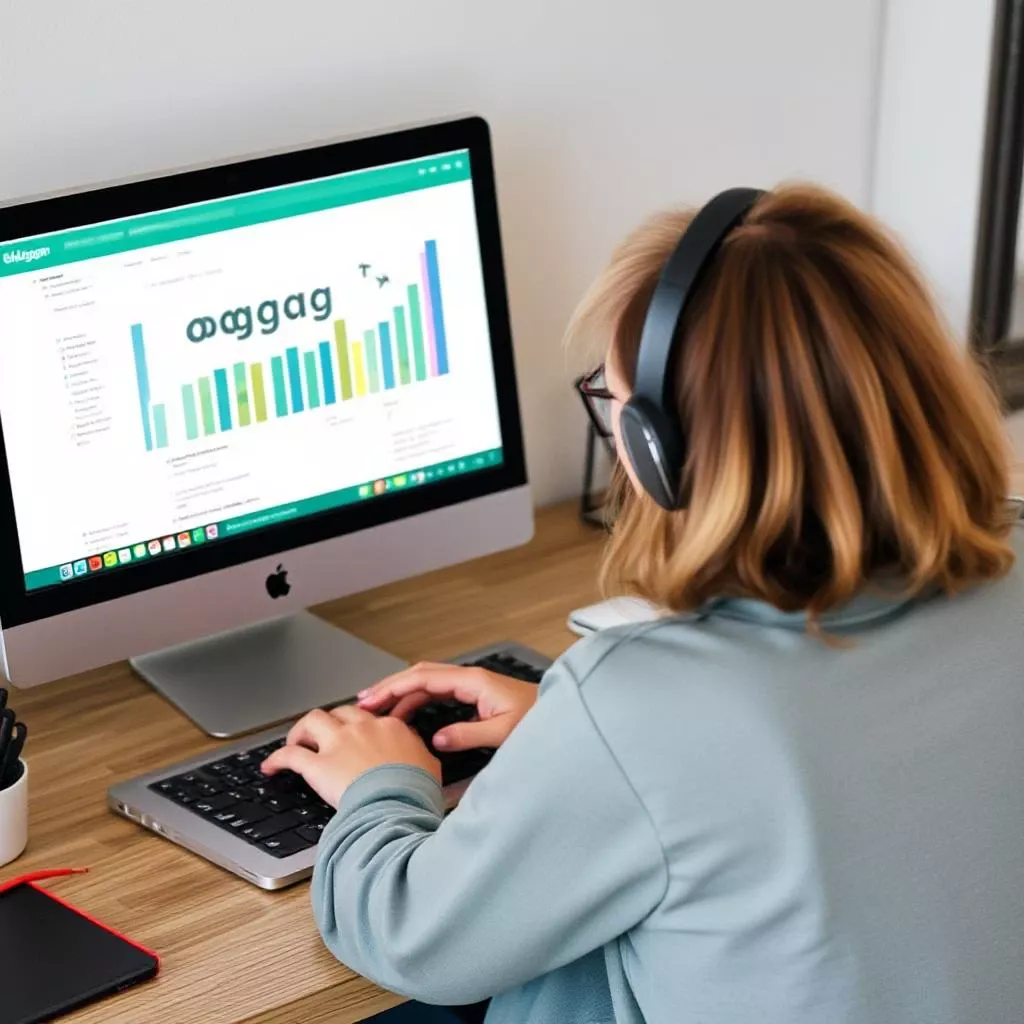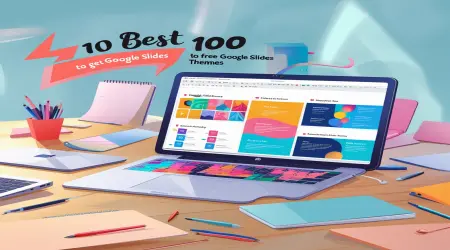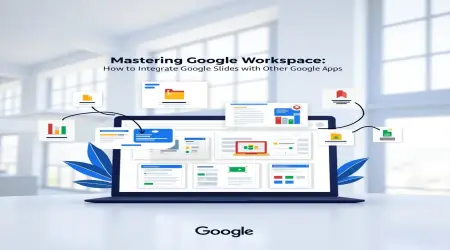Is Blogger Dead? Is Blogging Still Profitable in 2025? The Shocking Truth!
Welcome to Temploop, your trusted source for actionable insights on digital marketing, SEO, and content creation. In 2025, the blogging landscape is buzzing with debate: Is Blogger dead? Is blogging still profitable? With Google’s aging Blogger platform losing ground and new challenges like AI-driven search, social media dominance, and algorithm shifts, many wonder if blogging remains a viable path to success. This in-depth, SEO-optimized guide—crafted for Temploop—explores the state of blogging in 2025, debunks myths, and provides a roadmap for profitability, including specific strategies for monetizing a blog on Blogger.
👉Top 100 Google Searches April 2025: US, Global & Trending Keywords.
1. The Evolution of Blogging: A Journey to 2025
Blogging has evolved dramatically since its inception in the late 1990s. What began as personal online journals has grown into a cornerstone of content marketing, driving businesses, influencers, and creators to connect with global audiences. Understanding this evolution sets the stage for assessing blogging’s profitability and Blogger’s relevance in 2025.
Key Milestones in Blogging
1999–2005: Google’s Blogger and early WordPress made blogging accessible, with platforms like LiveJournal and Blogspot hosting personal diaries. Blogging was niche, with minimal monetization.
2006–2012: SEO emerged as Google’s algorithms rewarded keyword-optimized content. Bloggers began earning through Google AdSense and affiliate marketing.
2013–2019: Social media platforms like Instagram and YouTube fragmented audiences, but blogs remained vital for long-form content. Monetization diversified with sponsored posts and digital products.
2020–2024: AI-driven search, voice queries, and zero-click searches reshaped traffic. Bloggers adapted by focusing on E-E-A-T (Experience, Expertise, Authoritativeness, Trustworthiness) and multi-platform strategies.
2025: Blogging is a hybrid of written content, multimedia, and community engagement. Niches dominate, and profitability hinges on authority, SEO, and diversified income streams.
In 2025, blogging thrives as a vehicle for storytelling, education, and commerce, but platforms like Blogger face scrutiny. Let’s examine whether Blogger is truly dead and how bloggers can profit in this dynamic landscape.
2. Is Blogger Dead? The Truth About Google’s Platform
Google’s Blogger, launched in 1999 and acquired in 2003, was once a pioneer in blogging. Its free hosting, simple interface, and AdSense integration attracted millions. However, in 2025, critics argue Blogger is outdated, with limited features and SEO challenges. Is it really dead? Let’s break it down.
Blogger’s Strengths and Weaknesses
Strengths:
Free and Easy to Use: No hosting or domain costs make Blogger ideal for beginners.
Google Integration: AdSense and Analytics setup is seamless, supporting monetization.
Reliable Hosting: Google’s infrastructure ensures uptime and security.
Mobile-Friendly Templates: Basic responsive designs cater to mobile users (64% of searches).
Weaknesses:
SEO Limitations: Subdomains (e.g., yourblog.blogspot.com) have low domain authority, struggling to rank for high-difficulty keywords (KD 70–100). Gotch SEO notes Blogspot blogs rarely appear in top results for non-branded terms.
Limited Customization: Restricted access to CSS, JavaScript, and plugins limits design and functionality compared to WordPress (43% of websites).
Content Ownership: Google can delete blogs for policy violations, risking years of work.
Outdated Features: No native support for schema markup, e-commerce, or advanced analytics, critical for 2025’s SEO landscape.
Monetization Restrictions: Limited ad placements and affiliate link flexibility reduce revenue potential.
Past Issues Addressed: In prior Temploop discussions, you encountered XML parsing errors on Blogger (e.g., unescaped & in Google Fonts, unclosed div tags). These reflect Blogger’s strict XML parser, which complicates customization compared to platforms like WordPress.
👉Top Google Trends April 2025: Hottest Searches Unveiled
Why Bloggers Are Moving Away
SEO Challenges: WordPress, Squarespace, and Wix offer better SEO tools (e.g., Yoast, structured data). Blogspot’s subdomains and slow updates hinder rankings.
Scalability: Blogger suits hobbyists but struggles for professional brands needing custom domains, e-commerce, or membership sites.
Competition: With 600 million blogs, standing out requires advanced features Blogger lacks.
Perception: Blogspot’s dated aesthetic and association with low-effort blogs deter serious bloggers.
Verdict: Blogger isn’t dead for casual or beginner bloggers, but it’s nearly obsolete for professionals targeting profitability or high-difficulty SEO. Its free nature and Google integrations remain appealing, but limitations in customization, SEO, and scalability push serious bloggers to alternatives. If you’re on Blogger, transitioning to a custom domain (even within Blogger) or WordPress is advisable for long-term success.
3. Is Blogging Still Profitable in 2025?
Blogging’s profitability is a hotter topic than ever. With over 600 million blogs and competition from AI, social media, and video platforms, can bloggers still make money? The data says yes—but success demands strategy.
Blogging Statistics and Trends
Audience Reach: 77% of internet users read blogs regularly, with 60% engaging daily.
Market Growth: The content marketing industry, including blogging, is worth $600 billion in 2025.
Income Potential: 37% of bloggers earn over $100 monthly, 13% exceed $1,000, and top earners like Pat Flynn ($200,000/month) thrive.
SEO Power: Blogs dominate Google’s top results, with 82% of bloggers reporting SEO success. Long-form content (2,000+ words) ranks higher, averaging 1,447 words for first-page results.
Traffic Sources: 50% of bloggers source traffic from social media, 30% from search, and 20% from email and other platforms.
Top Monetization Models
Bloggers in 2025 diversify income to maximize profits. Here are the leading methods:
Affiliate Marketing:
Earn commissions by promoting products. Travel bloggers like Nomadic Matt earn millions via affiliate links (e.g., Booking.com, Amazon).
Average affiliate revenue: $0.50–$5 per click, with 1–5% conversion rates.
Digital Products:
E-books, courses, and printables offer high margins. Mia Brox of She Dreams All Day generates passive income through courses.
RPMs (revenue per thousand impressions) for digital products are 10–20x higher than ads.
Sponsored Content:
Brands pay for posts or reviews, especially in niches like food, travel, and tech. Rates range from $100–$10,000 per post.
Email Marketing:
Email lists convert readers into buyers. Personalized CTAs boost conversions by 202%.
Services and Coaching:
Offer consulting, freelance writing, or coaching. Bloggers like Ankit Singla monetize SEO expertise.
Display Ads:
👉How to Write a Blog Post Fast in 2025: 7 Proven Strategies for Speed and Quality
How Much Money Can You Make on Blogger?
Despite its limitations, Blogger supports monetization, primarily through AdSense and affiliate marketing. Here’s a breakdown of potential earnings:
Beginner (0–6 Months):
Traffic: 100–1,000 monthly visitors.
Earnings: $0–$50 via AdSense (low RPMs of $1–$5).
Strategy: Focus on content volume (20–30 posts) and basic SEO.
Intermediate (6–18 Months):
Traffic: 1,000–10,000 monthly visitors.
Earnings: $50–$500 via AdSense and affiliate links (e.g., Amazon Associates, 4–10% commissions).
Strategy: Optimize for long-tail keywords and build an email list.
Advanced (18+ Months):
Traffic: 10,000–100,000+ monthly visitors.
Earnings: $500–$5,000+ via diversified streams (AdSense, affiliates, sponsored posts).
Strategy: Use a custom domain, secure backlinks, and sell digital products.
Case Example: A niche Blogger blog on “budget travel” with 50,000 monthly visitors could earn:
AdSense: $200–$500 (RPM $4–$10).
Affiliate Links: $1,000–$2,000 (e.g., hotel bookings).
Sponsored Posts: $500–$1,000.
Total: $1,700–$3,500/month.
Limitations: Blogger’s ad placement restrictions and lack of e-commerce plugins cap earnings compared to WordPress, where bloggers like Michelle Schroeder-Gardner earn $100,000/month through diversified streams.
Key Insight: Blogging is profitable in 2025, but Blogger’s constraints require extra effort to achieve high earnings. Diversifying monetization and optimizing SEO are critical for success.
4. Challenges Facing Bloggers in 2025
Blogging’s potential is vast, but challenges test even the most dedicated creators. Here’s what bloggers face in 2025:
AI and Search Algorithm Shifts
Google AI Overviews: Launched in 2024, AI Overviews dominate 15% of searches, answering queries directly and reducing clicks. Bloggers must optimize for snippets and conversational queries.
AI-Generated Content: Tools like ChatGPT flood low-quality niches, making human-crafted, authentic content vital. Readers prioritize originality over AI summaries.
Algorithm Updates: Google’s Reddit partnership and core updates favor forums and high-authority sites, pushing smaller blogs down SERPs. E-E-A-T compliance is non-negotiable.
Competition and Market Saturation
600 Million Blogs: With 8.28 million posts daily, niches like lifestyle and tech are crowded. Sub-niches (e.g., “vegan camping gear”) offer less competition.
Time to Profit: Full-time income takes 21–48 months. 99% of bloggers quit within a year due to slow results.
Fragmented Audiences: YouTube, TikTok, and podcasts split attention, requiring multi-platform strategies.
Social Media and Video Content
Video Dominance: Video content drives 80% of internet traffic, with YouTube searches surpassing many blog queries.
Social Media Shift: Platforms like X and Instagram prioritize short-form content, challenging long-form blogs to retain readers.
Engagement Gap: Blogs must integrate multimedia (e.g., embedded videos) to boost dwell time and engagement.
Temploop Insight: Your past interest in SEO-optimized Blogger templates (e.g., templates-inspired designs) highlights the need to overcome Blogger’s technical limitations, like XML parsing errors, to compete in 2025’s crowded market.
5. Strategies for Blogging Success in 2025
To thrive in 2025, bloggers must combine niche focus, SEO mastery, and diversified strategies. Here’s how to succeed.
Niche Selection and Content Creation
Find a Profitable Niche:
Use Semrush or Exploding Topics to identify low-competition, high-intent niches (e.g., “sustainable travel for seniors”).
Validate demand with keyword research (aim for KD 30–60).
Craft Long-Form Content:
Posts over 2,000 words rank higher and attract backlinks. First-page Google results average 1,447 words.
Use a “ranch style” approach: create interlinked posts on subtopics (e.g., “vegan travel tips,” “vegan travel gear”).
Incorporate Multimedia:
Embed YouTube videos or podcasts to increase dwell time (key for SEO). Visual content boosts engagement by 80%.
Prioritize Authenticity:
Share personal stories and expertise to differentiate from AI content. Readers value human perspectives.
SEO Optimization for Modern Search
Emphasize E-E-A-T:
Update author bios with credentials, link to social profiles, and cite authoritative sources. Google rewards trustworthy content.
Example: A travel blogger should showcase real travel experience and verified reviews.
Target Long-Tail Keywords:
Keywords like “how to make money blogging in 2025” (KD 40–60) are less competitive and drive conversions.
Use Keyword Insights for conversational query analysis.
Optimize for AI and Voice Search:
Structure content for questions (e.g., “is blogging profitable in 2025?”). Voice search accounts for 20% of queries.
Add FAQ schema to rank in snippets and AI Overviews.
Build Backlinks:
Guest post on high-authority sites or collaborate with niche influencers. Backlinks boost domain authority by 20–30%.
Technical SEO:
Ensure fast load times (under 2 seconds) and mobile-friendliness. Use lazy loading and font preloading, as discussed in your Blogger template queries.
Building Authority and Traffic
Diversify Traffic Sources:
Leverage X, Pinterest, and Reddit for traffic. Your interest in Reddit community engagement (e.g., r/puzzlevideogames) aligns with Google’s forum bias.
Build an email list with lead magnets (e.g., free eBooks).
Engage Communities:
Join niche forums or Quora to answer questions and drive traffic. Reddit posts rank in Google’s top results, amplifying exposure.
Track Performance:
Use Google Analytics 4 and Search Console to monitor clicks, impressions, and positions, as you did with Temploop’s data. Optimize low-CTR pages with compelling titles.
6. Maximizing Profits on Blogger: Step-by-Step Guide
While Blogger’s limitations challenge profitability, strategic monetization can yield solid returns. Here’s how to make money on Blogger in 2025.
Setting Up a Profitable Blogger Blog
Choose a Niche:
Focus on high-demand, low-competition niches (e.g., “budget travel hacks,” “vegan recipes for beginners”). Use Ahrefs for keyword research.
Use a Custom Domain:
Upgrade from yourblog.blogspot.com to yourblog.com ($10–$15/year) to boost SEO and branding. Blogger supports custom domains.
Optimize Design:
Select a responsive template (e.g., Contempo, Soho). Customize CSS for clean layouts, as you explored with Groupati-inspired designs.
Add navigation menus, search bars, and social links for user experience.
Enable AdSense:
Link Blogger to AdSense for instant ad integration. Place ads in the header, sidebar, and between posts (max 3 ads per page).
Monetization Tactics for Blogger
AdSense Optimization:
Use auto-ads or manual placements for higher RPMs ($1–$10). Test ad formats (e.g., display, in-feed) to maximize clicks.
Example: A travel blog with 10,000 visitors could earn $100–$500/month.
Affiliate Marketing:
Join programs like Amazon Associates, ShareASale, or CJ Affiliate. Promote niche products (e.g., travel gear, kitchen tools).
Embed links in posts and sidebars. Use disclosure statements for transparency.
Earnings: $500–$2,000/month with 10,000 visitors and 2% conversions.
Sponsored Posts:
Pitch brands in your niche for paid content. Rates: $50–$500 per post for small blogs.
Use Blogger’s HTML widget to create sponsored banners.
Digital Products:
Sell eBooks or printables via external platforms (e.g., Gumroad, PayPal links). Promote through posts and email.
Example: A $10 eBook with 100 sales/month adds $1,000.
Email Marketing:
Use Mailchimp or ConvertKit (free tiers) to build a list. Offer lead magnets like “10 Budget Travel Tips.”
Earnings: Email campaigns convert 5–10% of subscribers, boosting affiliate and product sales.
Overcoming Blogger’s Limitations
SEO Workaround: Use a custom domain and optimize meta descriptions, titles, and alt tags. Focus on long-tail keywords to compete.
Customization: Edit HTML/CSS for better ad placements and design, as you did with Temploop’s Blogger templates. Avoid parsing errors by escaping special characters (e.g., &).
Scalability: Transition to WordPress after 6–12 months to unlock e-commerce and advanced plugins.
Pro Tip: Start with AdSense and affiliates on Blogger, then diversify with digital products and email marketing to scale earnings.
7. Case Studies: Bloggers Winning in 2025
Real-world examples highlight blogging’s profitability, even on Blogger.
Case Study 1: The Points Guy (Travel)
Niche: Travel rewards and credit cards.
Strategy: Publishes 2,000+ word guides, monetizes through affiliate links (credit cards, hotels), and leverages email marketing.
Results: Earns $50 million annually, with millions of monthly visitors.
Takeaway: Niche expertise and diversified monetization drive massive profits.
Case Study 2: BloggersPassion (Blogging Tips)
Niche: SEO and blogging.
Strategy: Targets long-tail keywords with in-depth posts, monetizes via affiliates (e.g., hosting) and coaching. Uses Blogger initially, then WordPress.
Results: $120,000/year with 100,000 monthly visitors.
Takeaway: Start on Blogger, but scale to WordPress for higher earnings.
Case Study 3: High Alpine Creative (Travel)
Niche: New Zealand travel.
Strategy: Uses Squarespace for SEO-friendly blogging, monetizes through freelance writing and affiliates. Focuses on authentic storytelling.
Results: Full-time income despite algorithm shifts.
Takeaway: Authenticity and quality content thrive in 2025.
Case Study 4: Budget Travel Blogger (Blogger Platform)
Niche: Budget travel tips.
Strategy: Runs on Blogger with a custom domain, monetizes via AdSense, Amazon Associates, and sponsored posts. Publishes 30+ posts in year one.
Results: $2,000/month after 18 months with 20,000 visitors.
Takeaway: Blogger can be profitable with niche focus and persistence.
8. The Role of AI in Blogging’s Future
AI is reshaping blogging, presenting challenges and opportunities.
Challenges
Content Saturation: AI-generated posts flood low-value niches, making human-crafted content critical.
Traffic Shifts: AI search platforms (ChatGPT Search, Perplexity) gain 1–2% of search share, requiring optimization for new engines.
Zero-Click Searches: AI Overviews reduce clicks, demanding snippet-focused SEO.
Opportunities
Content Creation: Tools like Semrush’s ContentShake generate outlines and drafts, saving 12x time.
SEO Optimization: AI tools (e.g., AIOSEO) enhance titles and meta descriptions for higher CTR, as you explored with Temploop’s Search Console data.
Audience Insights: AI analytics predict trends, guiding niche and keyword selection.
Best Practice: Use AI for research and optimization, but prioritize human storytelling to meet E-E-A-T and reader expectations.
9. Advanced Tips for Scaling Your Blog
To dominate in 2025, go beyond basics with these advanced strategies:
Create a Content Hub:
Build a pillar page (e.g., “Ultimate Guide to Budget Travel”) linking to cluster posts. This boosts SEO and authority.
Leverage AI Search:
Optimize for Perplexity and ChatGPT Search with structured, answer-focused content.
Experiment with Video:
Create YouTube videos for blog posts to capture video search traffic. Optimize with transcripts and tags.
Secure Premium Backlinks:
Pitch guest posts to sites with DA 50+. Backlinks increase rankings by 20–30%.
Test Monetization Models:
A/B test affiliate links, ad placements, and product pricing to maximize revenue.
Automate Workflows:
Use Zapier to automate social media posts and email campaigns, freeing time for content creation.
Engage on X and Reddit:
Share posts on X and niche subreddits (e.g., r/travel) to drive traffic, as you considered with puzzle game posts.
10. Conclusion: The Shocking Truth About Blogging
The shocking truth? Blogging is alive and thriving in 2025, offering immense profitability for those who adapt. Google’s Blogger platform, while limited, remains viable for beginners or budget-conscious bloggers, supporting earnings of $500–$5,000/month with AdSense, affiliates, and sponsored posts. However, its SEO and customization constraints make WordPress or Squarespace better for scaling to six-figure incomes.
With 77% of internet users reading blogs and top bloggers earning millions, the opportunity is clear. Success in 2025 demands niche focus, long-form content, advanced SEO, and diversified monetization. Challenges like AI content, algorithm shifts, and competition are real but surmountable with authenticity, E-E-A-T, and multi-platform strategies.
Temploop’s mission is to empower you with the tools to succeed. Whether you’re starting on Blogger or aiming for global impact, this guide provides a blueprint. The question isn’t Is blogging dead?—it’s Are you ready to make it profitable in 2025? Start now, leverage Temploop’s insights, and turn your blog into a revenue-generating powerhouse.










